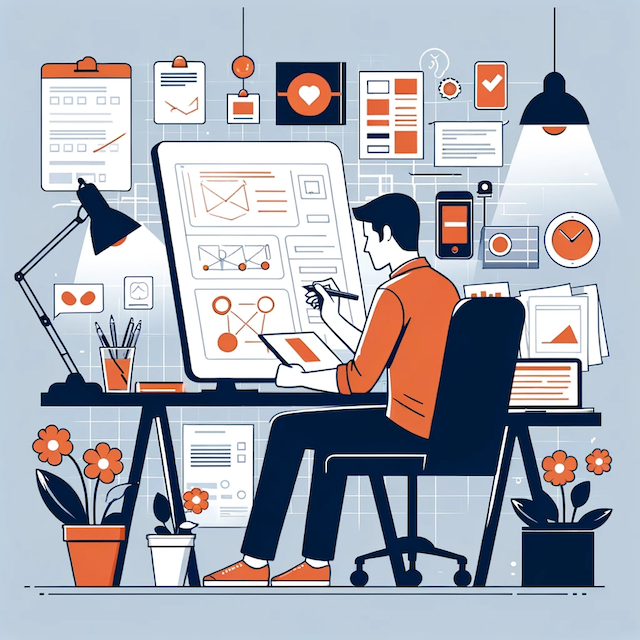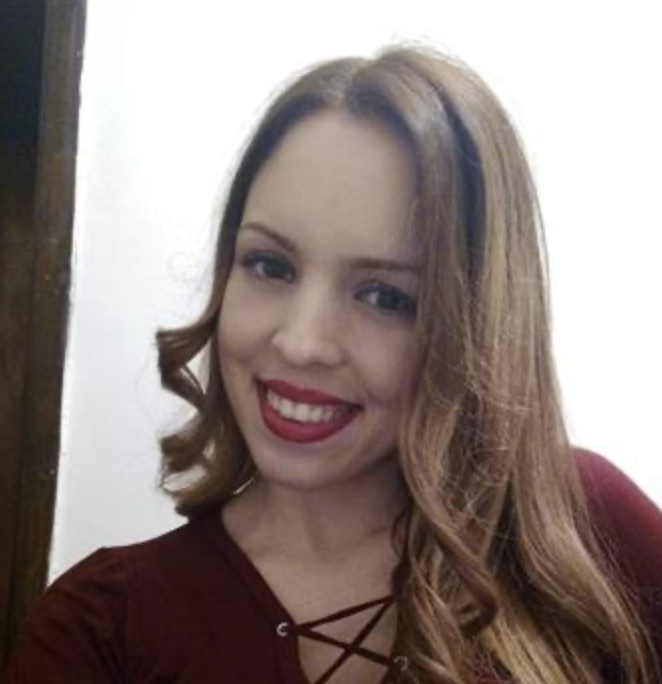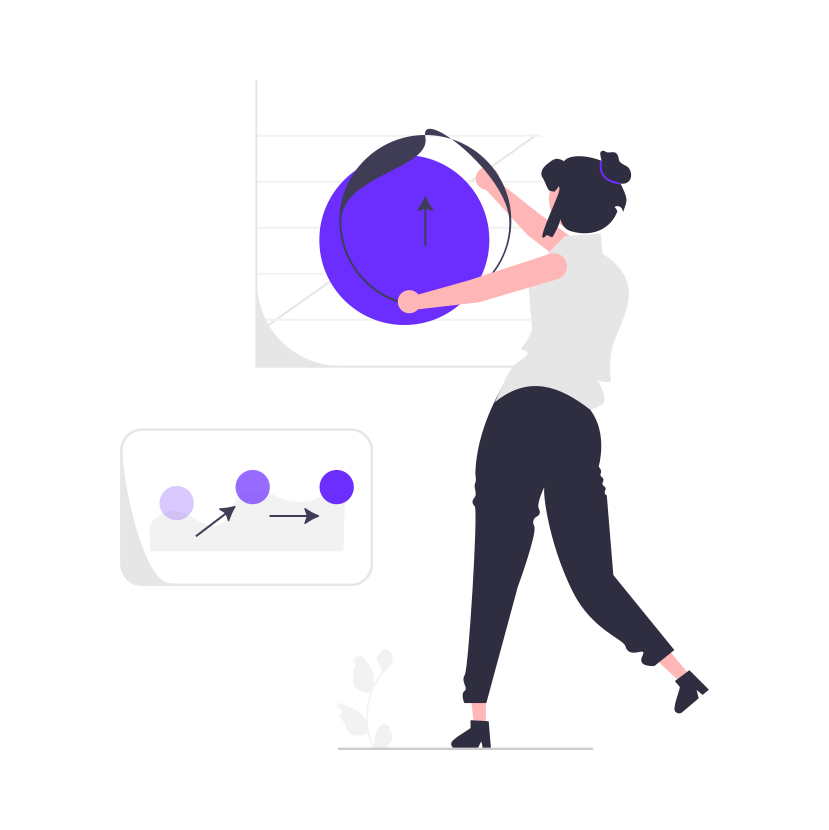Design is a vital piece of the product puzzle. When it comes to selling a product that works, how it’s designed determines everything from whether or not the audience finds it appealing to whether it fits the price tag to how functional it is for the consumer.
And who better to fill that piece of the puzzle than the product designer?
Now that the market is filled with new products and the competition is bigger than ever, the demand for product design professionals is enormous. However, this also equals a growing interest in this field, so for you to thrive in it, you need to know which steps to take to achieve success.
The product designer is the creative genius behind a product’s interface and user experience. As such, he holds a major role in the industry. In this post, I´ll share some strategies and approaches that will help you design better products and with it, achieve bigger success in the product design niche.
The role of a product designer in a digital product team

The career of a product designer is a blend of creativity, artistic vision, technical and research skills. A perfectly combined digital product team gathers experts with diverse specialties and skills to create a seamless experience for the customer who purchases the product. These people, combined with the right set of research and design tools, work to create something easy to use, good-looking, functional, and appealing for the targeted audience.
They use research data to target the right people, creativity to create something that stands out, and their expertise and experience to deliver something seamless and engaging.
Here are some of the main product designer roles:
- Define the problem/ Define what the customer needs, wants, and expects
- Visualize and create the product that serves the target buyer
- Make improvements to existing product designs
- Keep track of the competitors to create something of higher quality and functionality
Today, this position holds quite the prestige – and is highly paid, too. However, the product designer niche is competitive, so if you want to be in demand on the market and grow your career, you need to work on your skills, portfolio, and even your resume.
Top Niche Strategies for Product Designers in 2025

Everyone can be a product designer today – but only a few can be the best on the market. Below, you can find tips and strategies that will help you achieve major success in the product design niche and, with it, land the best clients and projects on the market.
The most important factor toward your success in product design is continuous learning. This field requires continuous learning and upgrades – and for several reasons.
For starters, you need to constantly work on your design skills because of new technologies. Product designers these days need to incorporate modern technologies into their products, learn what is trending on the market, and use the information to create something the user expects.
Modern products now entail much more in comparison to just a few years back. They include the design, but must also integrate modern technologies such as voice assistance, artificial intelligence, etc. The world is changing and users are more demanding than ever, so the work for a product designer is evolving, too.
Secondly, you need to keep learning to progress in the field and land the best projects and jobs. The majority of companies these days know how to do appraisals for employee selection, and you can be certain that most of them – if not all, will want to put their skills to the test before they hire you for the project or the job. Not to mention, they will most likely do performance appraisals to track your progress after you’ve been selected, so it’s important to keep working on your skills.
What does this mean for you?
It means that to thrive in the market, you need to stay on your toes. It is your responsibility to keep up with the niche trends and changes in your audience’s behaviors and the digital world in general. Not to mention, design projects now demand highly advanced analytical skills since you need to consider different variables to create a product that stands out.
This isn’t a field where you learn the ropes and use that same knowledge for decades. That’s just the base. Your tricks and strategies today might not work tomorrow – and will most likely not work a few years from now. This is why career growth for product design professionals demands continuous and adaptive learning.
The resume of a product design professional changes all the time. It includes different products, newly acquired skill sets, and selected qualifications for the job or project they apply to get. This can be exhausting, especially if your career trajectory is progressing fast, which is where a resume maker can help you tremendously. The right resume maker will allow you to customize your application for different jobs or projects, not to mention send out professional-looking resumes that stand out.
So here are some tips:
- Regularly Update Your Resume: As a product design professional, your resume should reflect the latest products you’ve worked on, along with any new skills you’ve acquired. Set a reminder to update your resume every few months or after the completion of a significant project.
- Identify Key Qualifications: For each job or project you apply for, pinpoint the specific qualifications and experiences that are most relevant. Highlight these in your resume to align with the job’s requirements.
- Utilize a Resume Maker Tool: Invest in a good resume maker tool. This will streamline the process of updating your resume and ensure it maintains a professional look. Research and choose a tool that offers customization options to tailor your resume for different job applications.
- Customize for Each Application: Use the resume maker to customize your resume for each job or project you apply for. Adjust the emphasis on certain skills or experiences to match the job description.
- Focus on Professional Aesthetics: Ensure that your resume not only contains relevant information but also looks professional and organized. Use the resume maker to experiment with different layouts and designs that are visually appealing yet maintain a professional tone.
- Stand Out with Unique Elements: Incorporate elements in your resume that make you stand out. This could be a unique design element (aligned with product design aesthetics), a concise summary of your unique value proposition, or notable achievements that set you apart.
- Seek Feedback: Before finalizing your resume, get feedback from mentors, peers, or professionals in your field. Use their insights to refine and improve your resume.
- Keep Track of Different Versions: As you customize your resume for different applications, keep track of these versions. Organize them in a way that you can easily retrieve and update them for future opportunities.
- Professional Representation: Ensure that your resume represents you in the best possible light. It should reflect not only your skills and experiences but also your professional ethos and approach to product design.
- Stay Informed and Evolve: The field of product design is constantly evolving. Stay informed about new trends and developments, and reflect this learning and evolution in your resume. This shows potential employers that you are adaptable and continuously growing in your profession.
This is a rule of thumb for a quality design. Regardless of what you are working on, try and incorporate the following five phases into your product design:
- Empathize. Good product design begins with targeting the right audience. Before you start designing a product, research the targeted buyers to gain a better understanding of who will use the product.
- Define. Next, use the customer data you gathered to get in the shoes of the customers. The idea is to define what you’ll design based on user insights and needs.
- Ideate. Once you define what you need to design, it’s time to brainstorm for creative solutions. This is the point where you use your creativity. Note down some ideas and find the ones that best suit the project.
- Prototype. It’s now time to turn that plan and ideas into reality. Build a prototype – or a series of them. Prototypes are ideal for showing you if you are on the right track, and might even help you come up with better ideas for your work.
- Test. Finally, go to your users to test the ready prototype. Testing it before sending it out there in the world will help you remove the glitches beforehand, not to mention save a lot of money.
How do you know that your design is a success? Don’t just aim at the number of purchases or downloads. Before you put any product on the market, set a clear goal on what you want to achieve with the design. This will also help you in the designing phase.
Of course, there’s no need to stop aiming for more success when you reach your initial goal. Start by defining success criteria such as KPIs, expected number of sales per month or year, and more – and make sure to revise these as time passes.
When working on this phase, you might want to discuss the goals with the client or stakeholders.
Research is right at the center of product design. When you define your product vision, user and market research will give you the remaining parts you need to make it great.
Yes, research takes time and requires a lot of effort, but this is the best way to figure out what your customer needs, as well as how your current design performs on the market.
If you do this early in the design process, it will save you plenty of resources such as time and money down the road. Not to mention, your stakeholders will feel more comfortable if they have some tangible data in their hands.
Check this guide about niche research to learn some valuable insights.
As you progress in your career in the product design niche, you will get feedback from the customers and stakeholders. This feedback is the most valuable tool for your career growth. Use what you learn about your ready designs to improve your future work.
Negative feedback is an opportunity to learn. Leverage the complaints of customers over previous products you designed to improve your skills and create better designs in the future. Also, focus on your strengths as described in positive feedback to keep delivering quality to the targeted users.
Are you ready to take your product design career to the next level?
The journey of a product designer is a challenge but also an opportunity for continuous growth. This is a highly demanded, highly paid field, so the remaining question is – are you ready to upstage your career in the product design niche?
The evolving landscape of design demands adaptability on your behalf, so keep working to achieve more success and push the boundaries of your field.
About the author:

Nadica Metuleva is a senior content writer with experience of over eight years in the freelance market. Her specialty is blog posts, listicles, and articles in the business, SaaS, gambling, and lifestyle niches. Over the years, Nadica has deepened her understanding of SEO strategies and developed a passion for storytelling. She holds a Master’s Degree in English Literature and Teaching and speaks four languages. You can find her on LinkedIn.
